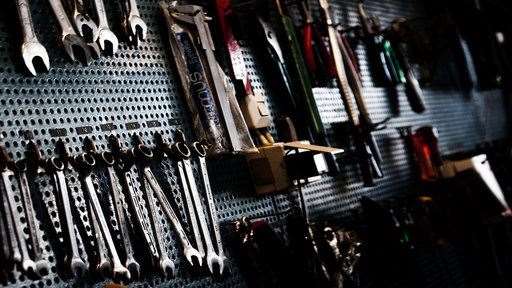Article by
Andy Overbay, Virginia Extension Agent & Unit Coordinator, Smyth County, (276) 783-5175
Keeping equipment ready and able requires advance planning, scheduling of check-ups and tune-ups, and routine maintenance. As costs continue to rise, it’s tempting to forego these expenses to stretch a few more hours out of the old tractor, chopper, or baler.
As expensive as some of these maintenance costs are, repairs and the opportunity cost losses from breakdowns are far more expensive and stress producing. As margins narrow, “getting by” becomes “getting left behind.” An example of ‘spend now to save later’ originates with my father. A tractor mechanic and shop foreman for over 25 years, dad taught me a great deal. An example is his advice on rake teeth. Conventional wisdom would suggest that as a rake loses teeth over time, one needs to replace them; however, the best strategy is to rebuild the rake with a full set of teeth, keeping the remaining teeth as replacements.
A colleague had a problem with his rake losing the same teeth at the same time and thought something was amiss with his rake. What he failed to recognize was that as he installed new teeth, they weren’t evenly worn with the others. When the rake was lowered into working position, the new teeth struck the ground first and with the most stress, causing them to fail. By replacing all 100 teeth, his rake was running true and as it lost teeth in the future, he had a ready supply of semiworn teeth for replacements.

A friend says that he “despises to change the oil” in his tractors and trucks, but frankly there is nothing that extends the life of these expensive pieces of equipment more. As diesel fuel (even low sulfur diesel) burns, it creates sulfuric acid that slips past your oil rings into the crankcase of the engine. Over time, this acidic build-up eats away at main bearings and seals, leading to costly and timeconsuming repairs. Many people also don’t realize that antifreeze will lose its punch over time and dirt and deposits in your coolant can act as mini-combustion chambers that pit metal causing sleeves to leak and fail.
Checking fluid levels and keeping engines as clean as possible can help save money; cleaner really does run better. An 1/8” layer of grease, dirt and grime cuts an engine’s ability to cool itself in half so be sure to wash off spills and leaks to prevent further damage. Ext. publ. 442-451 by Dr. Bobby Grisso and Robert Pitman summed up machinery maintenance in this way:
“A Midwest study showed that many farmers could reduce machinery repair costs 25% by improving routine maintenance procedures. With a yard full of machinery, that savings can be significant. As an example, an $80,000 tractor will typically require about $24,000 in repair costs during 5,000 hours of operation when receiving average maintenance. This cost can be decreased to approximately $18,000 with excellent service management. Timely preventative maintenance and inspection will not only help reduce major problems and downtime, it will also help identify problems when they can be corrected with relatively minor repairs.”
The most important equipment on a dairy farm is in the parlor. Dr. Clell Bagley, Extension Veterinarian with Utah State University had this to say about servicing dairy equipment:
“The milking machine (milking system equipment) receives some of the hardest use of any equipment on the dairy farm and yet is often neglected for routine maintenance. Besides long hours of use each day the milking equipment is also exposed to water, milk and chemicals as well as multiple persons using it - all of which are severely detrimental to equipment. This equipment is critical for the proper harvest and storage of the dairy farm "crop" and will function best if provided routine maintenance.”
Rubberware deteriorates rapidly, but is often not changed as recommended. It "looks okay" to the dairyman, so it tends to be used longer. This is especially true with inflations because they look okay at the time of their expiration— and they should. But, pitting is beginning to occur. These microscopically small pits in the surface retain milk and bacteria which then begins to have a subtle effect on somatic cell count and mastitis levels. Soon the dairyman is paying an expensive price (mastitis) for the choice to use old inflations. The same principle applies to the rubber hoses which begin to crack and develop small holes. Pulsators should be checked for proper function. Some brands are designed to be washed out periodically. Also, "kits" should be used to replace the parts within the pulsator that wear with time and use.
Some dairy farms do much of the maintenance themselves while others find a service contract more economical. No matter the system, it is important that each dairy has a method so that routine maintenance is done in a timely manner to avoid problems and breakdowns. It is expensive to service and maintain equipment; however, the costs of not doing routine maintenance are far higher. Weighing the investments already made against the replacement costs of the equipment on hand highlights that maintenance truly pays dividends in the long run.
Article courtesy of Virginia Cooperative Extension